MARIANI’S
Virtual
Gourmet
July 19 ,
2020
NEWSLETTER
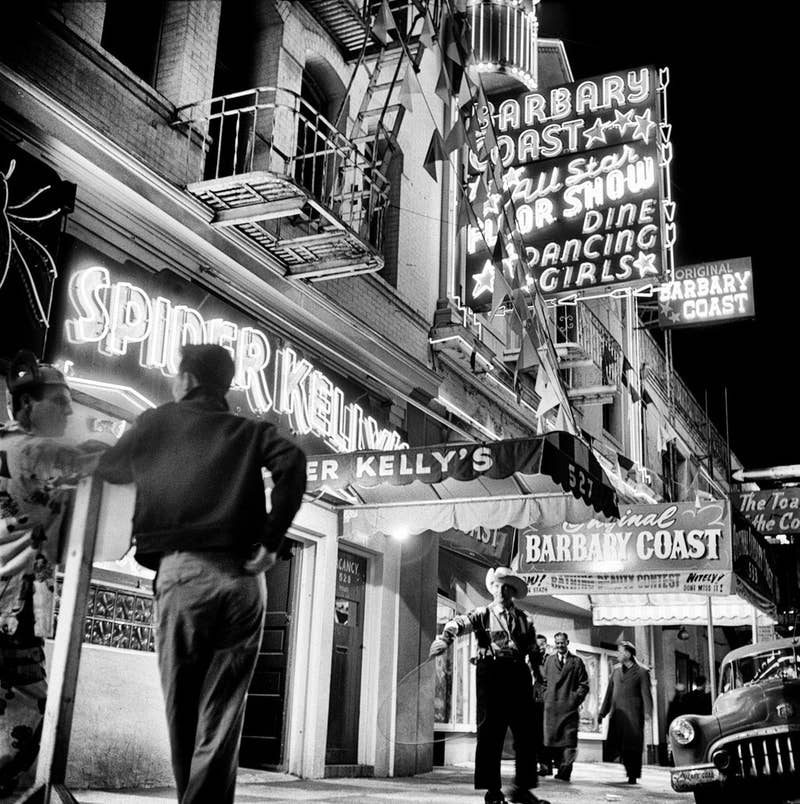
❖❖❖
IN THIS ISSUE
HIGHLANDS, DETROIT
By John Mariani
NEW YORK CORNER
LOVE AND PIZZA
CHAPTER SEVENTEEN
By John Mariani
NOTES FROM THE WINE CELLAR
NEVER SERVE RED WINE WITH CHEESE
AND OTHER WINE MYTHS
By John Mariani
❖❖❖
Highlands Seeks to Become Detroit’s Beacon of Hope in the Year of the Plague
By John Mariani
Photos by Anthony Morrow
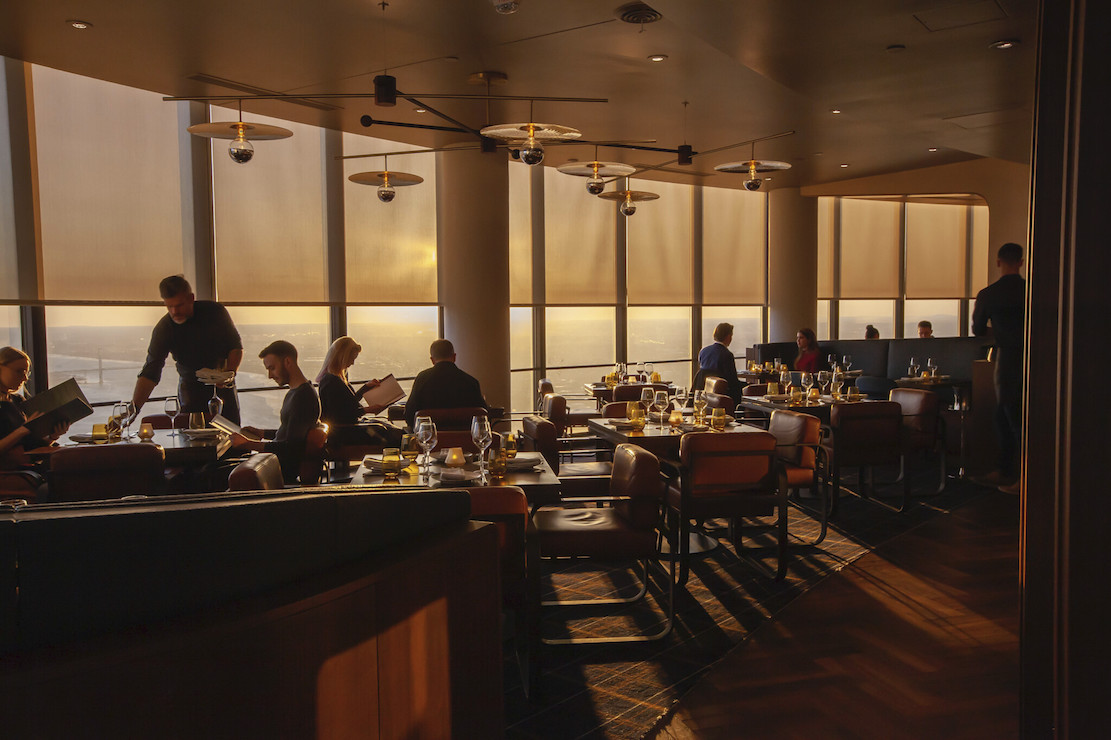
Seventy-one floors above
Detroit, taking in views of the north, south,
east and west and across the Canadian border,
Highlands restaurant, upon opening last fall,
was to be a symbol of Detroit’s return from the
long nightmare of the largest municipal
bankruptcy in U.S. history in 2013, at a time
when its population had declined from 1.8
million people in 1950 to 700,000.
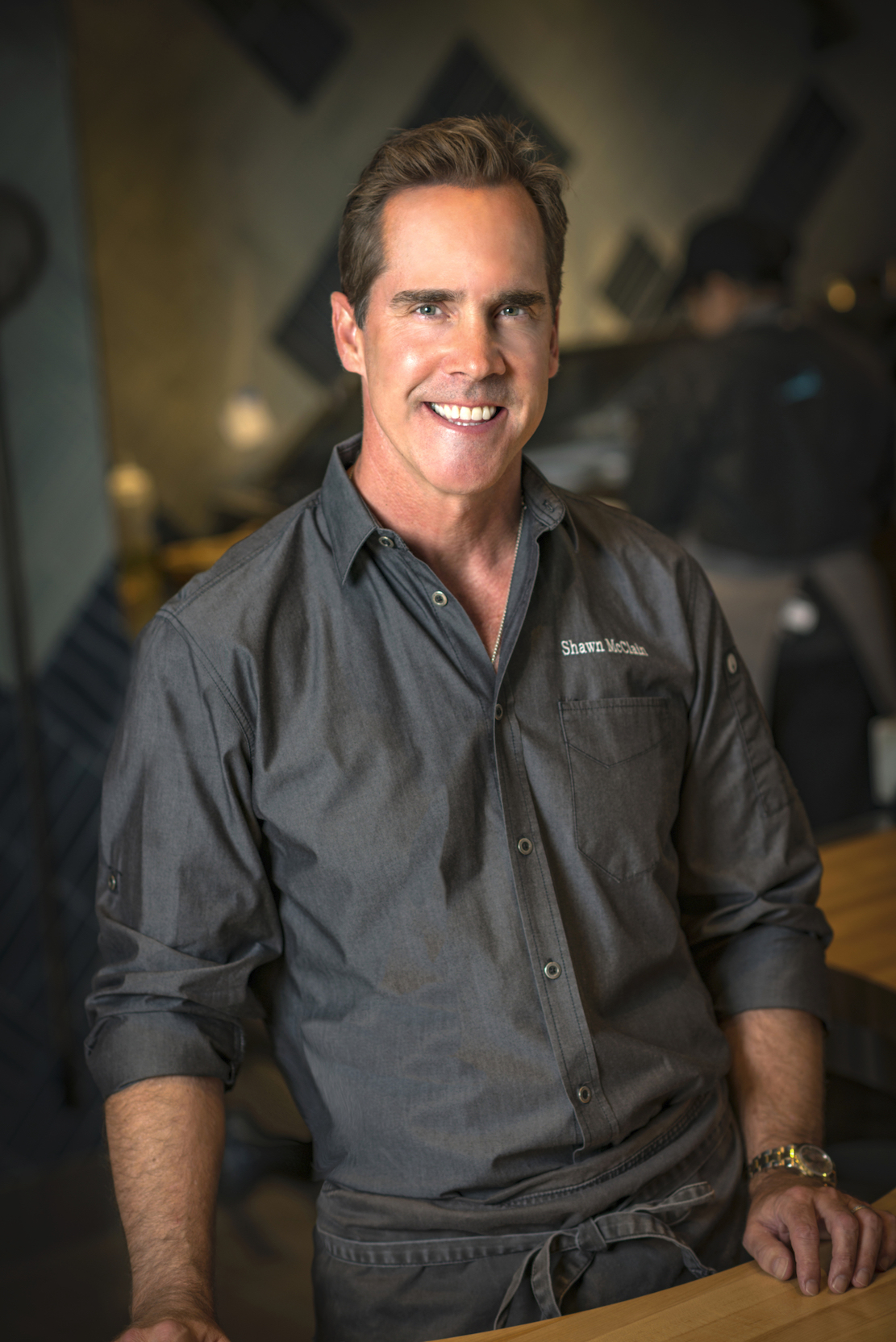 Located
within the city’s awkwardly renamed landmark
GMRENCEN (previously the Renaissance Center),
Highlands was to be a big part of Detroit’s
recovery, which included a new convention center
that was scheduled to come on line in 2020 for the
International Auto Show, now postponed until 2021.
The old Joe Louis arena was torn down, with a
replacement due this summer. Ford Motor Company
had plans to renovate the Michigan Central train
station. Then, with the arrival of the COVID-19
pandemic, everything screeched to a halt.
Located
within the city’s awkwardly renamed landmark
GMRENCEN (previously the Renaissance Center),
Highlands was to be a big part of Detroit’s
recovery, which included a new convention center
that was scheduled to come on line in 2020 for the
International Auto Show, now postponed until 2021.
The old Joe Louis arena was torn down, with a
replacement due this summer. Ford Motor Company
had plans to renovate the Michigan Central train
station. Then, with the arrival of the COVID-19
pandemic, everything screeched to a halt.
Photo: Ken Miller
The Highlands opened
to much fanfare last November, although there had
long been a restaurant atop the hotel since the
days when aeries like New York’s Windows on the
World and the revolving restaurants atop Seattle’s
Space Needle and Atlanta’s Hyatt Regency were
quite literally the heights of American dining. McClain
Camarota Hospitality, which has three restaurants
in Las Vegas, took over what had been called the
Coach Insignia (then owned by Marriott) and spent
three years on the project. Chef-partner Shawn
McClain, born in Grosse Ile, Michigan, just down
the Detroit River, worked on three different
concepts on the 71st and 72nd floors, reached by a
dedicated elevator within the hotel: Highlands
Steakhouse, with an open kitchen, 200-label 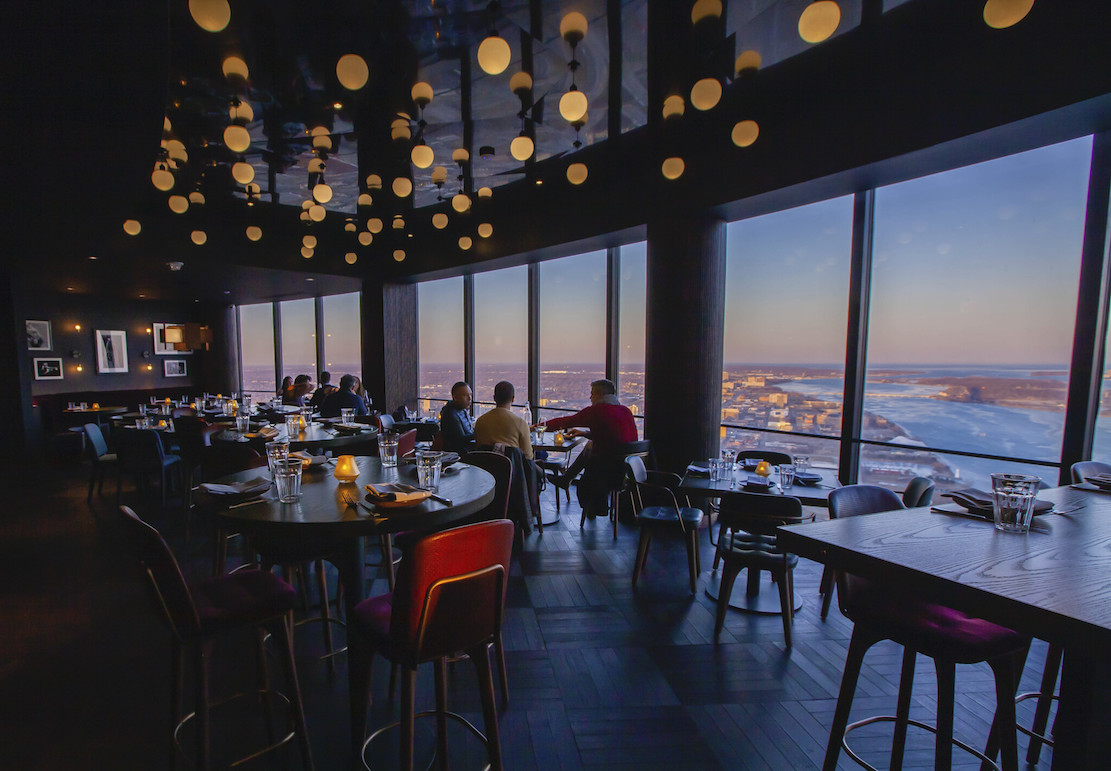 wine list and bays of
banquettes; High Bar, which has 21 private Scotch
lockers for Detroit Whiskey Club; and Hearth 71, a
more casual restaurant with open-fire cooking and
emphasis on small plates.
wine list and bays of
banquettes; High Bar, which has 21 private Scotch
lockers for Detroit Whiskey Club; and Hearth 71, a
more casual restaurant with open-fire cooking and
emphasis on small plates.
Highlands re-opened June 17
under municipal guidelines that require a 50
percent capacity of guests; six feet of space
between tables; signage that explains all
precautions; and masks for all employees. There
are no longer printed menus, using instead a QR
code people can scan with their phone. Face coverings are required to enter
the building, in the elevator and when guests
are moving through the common areas within the
restaurants. Bar seating is not available at
High Bar during the current phase of reopening.
Lounge seating, banquette and floating low- and
hi-top seating all have six-foot distancing
between each table.
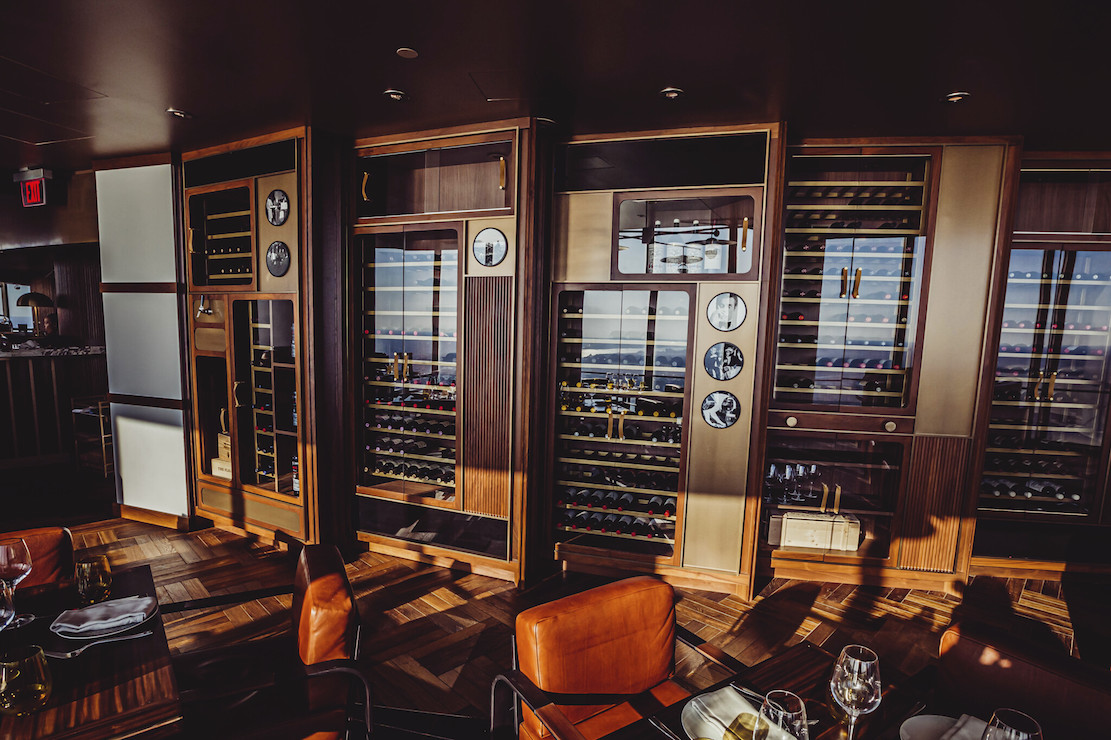 According
to Richard Camarota, Highlands Operations Director
& Managing Partner, “We couldn't operate
[during the shutdown], so we decided to double
down on developing our people and our culture. We
enlisted our friend and collaborator Shane
Green, a renowned culture guru based in Las Vegas
and author of The Culture
Hacker, to help us re-define our shared
values, so that they’re more than just a poster on
the wall. We are committed to ensuring our values
are actionable, measurable and can be felt by
all, from the dishwashers to the hosts, and
everyone in between."
According
to Richard Camarota, Highlands Operations Director
& Managing Partner, “We couldn't operate
[during the shutdown], so we decided to double
down on developing our people and our culture. We
enlisted our friend and collaborator Shane
Green, a renowned culture guru based in Las Vegas
and author of The Culture
Hacker, to help us re-define our shared
values, so that they’re more than just a poster on
the wall. We are committed to ensuring our values
are actionable, measurable and can be felt by
all, from the dishwashers to the hosts, and
everyone in between."
Before the
shut-down, Highlands had attracted the usual early
curiosity seekers but had quickly developed both a
local and suburban clientele, with guests driving
two hours into town. Management was betting on the
casino crowd just across the river in Canada as
well as those who would be coming to the new
convention center and sports arenas to see
Pistons, Tigers and Lions games in season. The
pandemic dashed all those prospects. And with its
kitchens and facilities 71 floors up in the air,
take-out service was never an option.
“We hope that we’ll begin
settling back into more normal operations come
Labor Day,” says McClain, “but for now we are
staying cautious and our operations are limited.
We'll keep it this way, until we're convinced that
we can scale up safely. I am personally thrilled
to be back to work; it means the world to be in
this amazing setting, taking care of people,
cooking our butts off and doing what we love."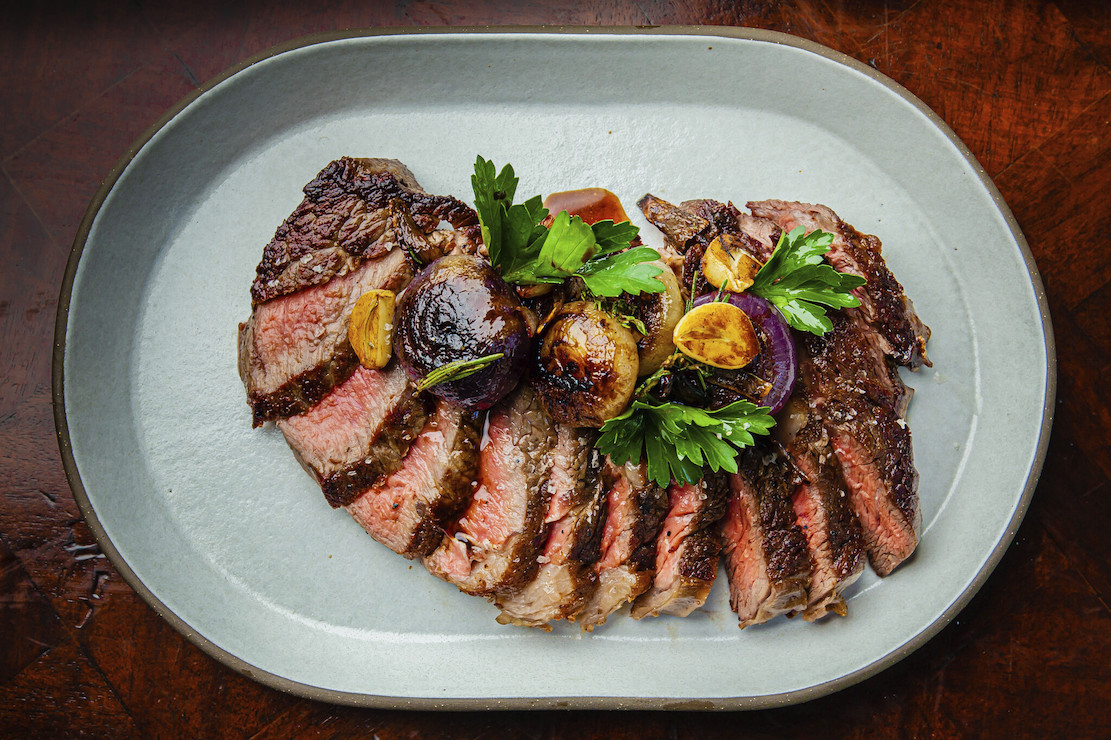
I had occasion to visit Detroit
and dine at Highlands last January and found the
local boosters giddily optimistic that the city’s
economic troubles were behind it. In an editorial
in an October 2019 issue of Visit
Detroit entitled “It’s Happening,” Larry
Alexander, president and CEO of the Detroit Metro
Convention & Visitors Bureau, wrote, “We are
in awe of the list of talking points we now have
about what’s new, what’s coming and what’s
possible in Detroit. It seems to be never-ending
and constantly evolving.”
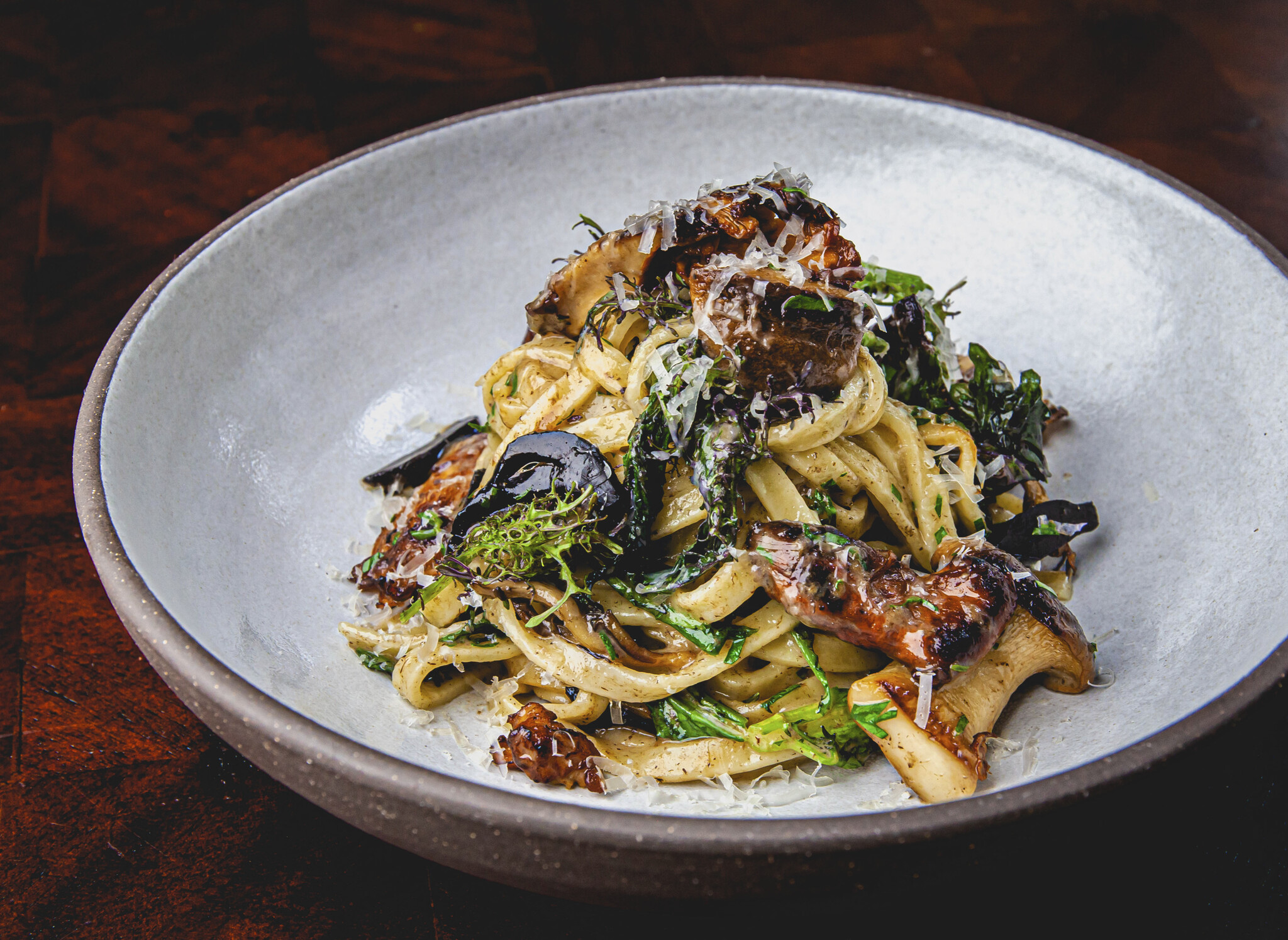 Nowhere did
this seem to be the case more than at Highlands,
which had just enough Midwestern swank and swagger
to become a destination restaurant, with nothing
else like it from Detroit to Chicago. At the time
the panorama was the obvious, major draw, but the
food I tasted showed the real strength of modern
American cuisine when it is based on first-rate
ingredients, not least the steaks dry-aged in
Highlands’ own lockers, and provender as much as
possible from Michigan and the Midwest.
Nowhere did
this seem to be the case more than at Highlands,
which had just enough Midwestern swank and swagger
to become a destination restaurant, with nothing
else like it from Detroit to Chicago. At the time
the panorama was the obvious, major draw, but the
food I tasted showed the real strength of modern
American cuisine when it is based on first-rate
ingredients, not least the steaks dry-aged in
Highlands’ own lockers, and provender as much as
possible from Michigan and the Midwest.
While I have not been back to
taste my way through the current menu, now fixed
priced at $71 for four courses, most of the dishes
I enjoyed a great deal are still on it, including
the wagyu beef tartare with smoked egg yolk,
marrow toast and pickled shallot; the chilled
King prawns with sorrel cream, sugar snap
peas, lemon zest aïoli and radishes; superb
housemade ricotta agnolotti with roasted
zucchini, cherry tomatoes, eggplant and balsamic
puree and sweet basil; and Painted Hills
Ranch New York Strip (above) served with whipped
potatoes, charred leek herb sauce and glazed pearl
onions. Supplements apply to Piedmontese filets,
raw oysters, fried squash blossoms and more. For
dessert, there’s chocolate ganache with
peanut butter mouse and  toasted
marshmallow, and violet crème
brûlée with Michigan black cherry,
juniper and candied lemon.
toasted
marshmallow, and violet crème
brûlée with Michigan black cherry,
juniper and candied lemon.
The High Bar menu, with a
welcome collection of Michigan beers like Brewery
Vivant from Grand Rapids and Arbor Classic Blonde
Ale from Ann Arbor, also offers the wagyu beef
tartare ($18); foie gras brûlée ($25); bucatini
with wild mushrooms ($15; left) and an artisanal
cheese board ($12).
I
can imagine that seeing the lighted floors of
Highlands from across the Detroit River in
Windsor, Canada, is like seeing the lights of the
World Trade Center and Empire State Building from
across the East River in Brooklyn. And while I was
looking out the tall windows from a banquette in
the dining room I remembered that it was the same
spot where Jennifer Lopez met George Clooney in
the 1998 movie Out of Sight
(right),
which, oddly enough, no one at the restaurant
seemed to recall. I remember Lopez ordering
“bourbon, water back,” and Clooney, speaking in
Elmore Leonard’s cool bankrobber voice, being
seductive, saying, “You’d be surprised about what
you can get, if you ask for it the right way.”
❖❖❖
By John Mariani
LOVE AND PIZZA
Since, for the time being, I am unable to write about or review New York City restaurants, I have decided instead to print a serialized version of my (unpublished) novel Love and Pizza, which takes place in New York and Italy and involves a young, beautiful Bronx woman named Nicola Santini from an Italian family impassioned about food. As the story goes on, Nicola, who is a student at Columbia University, struggles to maintain her roots while seeing a future that could lead her far from them—a future that involves a career and a love affair that would change her life forever. So, while New York’s restaurants remain closed, I will run a chapter of the Love and Pizza each week until the crisis is over. Afterwards I shall be offering the entire book digitally. I hope you like the idea and even more that you will love Nicola, her family and her friends. I’d love to know what you think. Contact me at loveandpizza123@gmail.com
—John Mariani
To read previous chapters go to archive (beginning with March 29, 2020, issue.
LOVE AND PIZZA
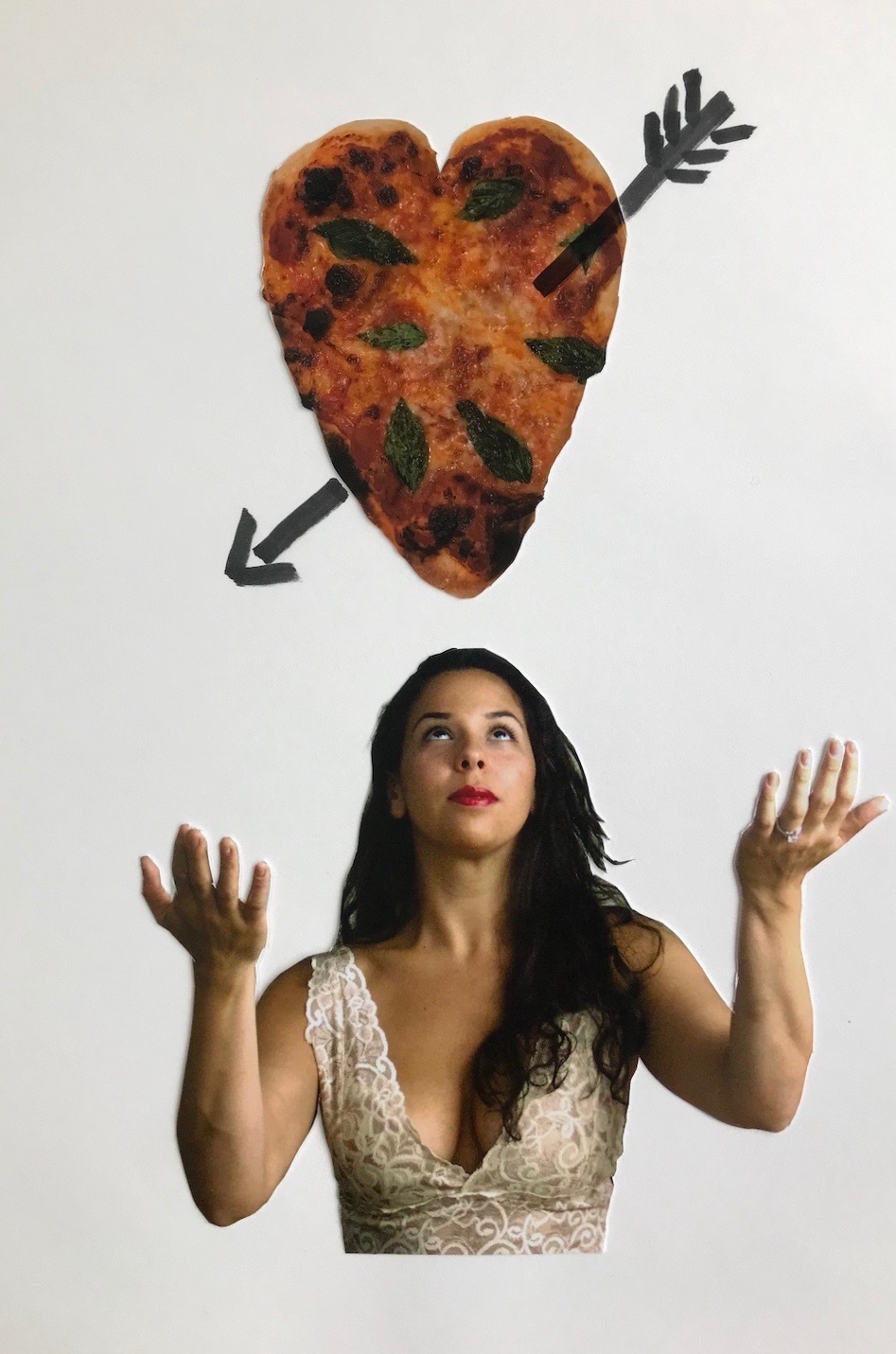
Cover Art By Galina Dargery
CHAPTER
SEVENTEEN
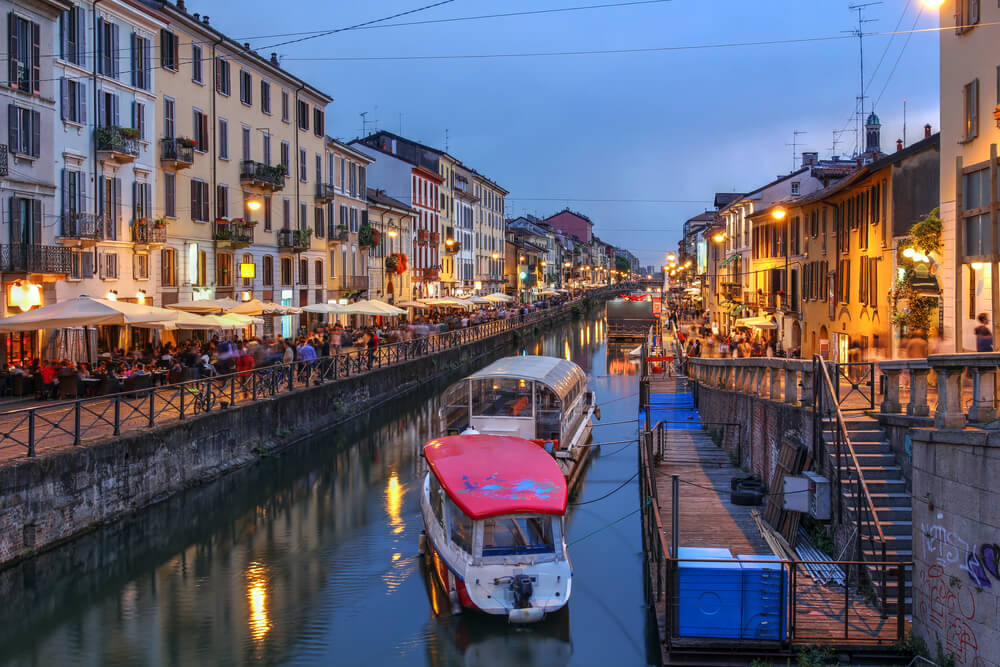
“Nicky, you had ten phone messages today,” said Catherine, who seemed as intrigued as she was annoyed by having to take several of them while studying.
Nicola had returned to the dorm exhausted and was bewildered as to who would be calling her. Not even her family called her unless there was an emergency.
“Who’s calling me?” she asked Catherine.
“From the looks of the messages—some of them are in Italian—they seem to be editors and modeling agents. The dorm took some of the others and just scribbled down the numbers.”
“You’re kidding?”
“Call them and find out.”
“I don’t believe all this is happening,” said Nicola, tossing her things on the bed. “I have so much to tell you about what happened this morning.”
“I’m all ears.”
“Oh, I’ll tell you, but first, first I have to tell you we are both invited to a dinner party at Signora Palma’s.”
Catherine gasped. “When?”
“Tonight.”
Catherine, not usually fazed by invitations to dinner parties, said, “Palma wants you and the rest of the models to come to a dinner party?”
“No, she told me it was only me, then specifically invited you.”
Catherine sat down on her bed and said, “Nick, I knew this whole modeling thing was going to lead to something. This is fabulous!” Then, showing mild anxiety, Catherine asked, “What’s the dress code for the party?”
Nicola shrugged and said, “Signora Palma said whatever we want to wear. She said—Nicola rolled her eyes and affected Signora Palma’s accent—“Bella, you and Caterina are so bee-yoo-ti-full, you wear any-thing you want!”
“I hate when someone says that. It doesn’t give me a clue what to wear.”
“Well, it’s certainly not going to be a big deal formal dinner. She’s exhausted and she said she just wanted to have some friends over. I think she just wants to thank me for helping her out.”
“Okay,” said Catherine, whose mind was turning over all the clues, “so here’s what we do. We go chic but cool, we don’t overdress, but we have to look as if we know what’s stylish. God knows what everyone else will be wearing.”
“How ‘bout you work on that? I gotta get a nap in before we leave.”
Catherine replied, “Nothing would please me more. Go to sleep.”
The phone messages went unanswered that evening; actually Nicola forgot about them in her haste to take a nap then get dressed for dinner. She’d glanced at a few, no one she knew, then decided to take them with her to Signora Palma’s, in case she’d know some of the names.
An hour later Catherine gently shook her friend from sleep, and whispered, “Nicky, time to get ready. Wanna know what I chose for us tonight?”
Nicola rose, then collapsed back onto her pillow, then rose again and looked across at Catherine’s bed, now spread out with clothes. Catherine had cobbled together outfits like a scavenger—a couple of the new items the girls had bought, some old ones, even one or two from Mercédes.
“Signora, for your perusal,” Catherine said grandly.
“Good job!” said Nicola. “I like this . . . and this. Maybe another scarf with this? But first let me take a shower.”
Nicola stood under the handheld shower head on the twisting snake-like metal coil common to European showers, soaking herself free of the hairspray, the make-up and the sweat of the day’s event. While she stood there under the weak jet of barely hot water, she began to think about how the day had been a complete fluke and that tonight would be fun and then it would be over. The idea of going on with modeling really meant nothing to her, she kept telling herself, not least because she was returning in another two months to New York to take summer courses to gain enough credits to graduate after the fall semester. She could think about everything else then.
“Nick,” shouted Catherine, “save me some hot water!”
“Sorry,” said Nicola, shaken from a daydream that seemed to straddle the world of academia and of fashion. “I’m coming out.”
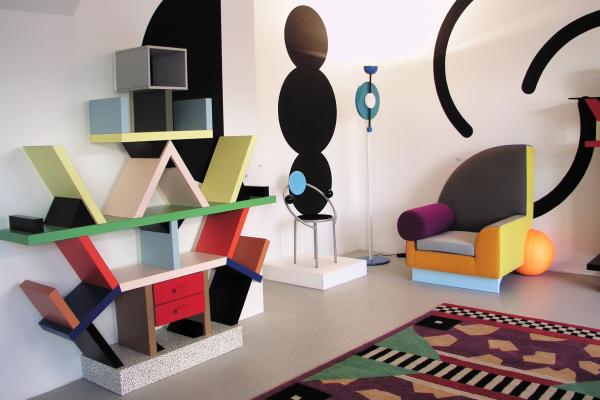 While Catherine was
showering,
Nicola sat in front of the mirror wondering if she
should attempt to restore
the Cardinale-like make-up she’d wore that day and
decided, what the hell, why
not, just not so dramatic as for the runway. Signora
Palma
would probably love it if she did.
So, trying to recall what the stylist had
done at the studio, Nicola
applied eyeliner and mascara, with an almost
unnoticeable amount of
coral-colored eye shadow. Nicola’s
skin, with that hint of out-of-season tan, needed
nothing and her lipstick was
a natural pink.
While Catherine was
showering,
Nicola sat in front of the mirror wondering if she
should attempt to restore
the Cardinale-like make-up she’d wore that day and
decided, what the hell, why
not, just not so dramatic as for the runway. Signora
Palma
would probably love it if she did.
So, trying to recall what the stylist had
done at the studio, Nicola
applied eyeliner and mascara, with an almost
unnoticeable amount of
coral-colored eye shadow. Nicola’s
skin, with that hint of out-of-season tan, needed
nothing and her lipstick was
a natural pink. Having decided to go fairly casual, and with the weather still not quite feeling like spring, Nicola chose beautifully tailored charcoal gray slacks with a royal blue cashmere v-neck sweater and an unconstructed knitted blazer closely matching the two colors. Her hair was down and billowing. Catherine, who always went for bright colors, opted for a printed blouse she’d bought that week at Moschino and a burgundy colored crêpe fabric miniskirt, but not that short. Her hair was tied back with a silk kerchief.
“Ready?” she asked Nicola.
“Guess so. Let’s go wow the fashionistas of Mee-lah-no.”
The usual BMW was waiting for them downstairs and off they went, again to the Navigli, just a few blocks from the Patrizia Palma studio. It was a pre-war building, not novecento, and retained the solid, stripped down art déco lines once favored by Mussolini’s architects in the 1930s. In the piazza outside stood a statue of a nude man and a rearing horse on a pedestal—a favorite motif of that period, now looking like a bad modern copy of a bad Roman copy of a mediocre Greek statue.
The driver rang the doorbell for the girls and the responder told them to come to the third floor. When they exited the narrow, enclosed elevator, they could hear nothing that suggested a party was going on, and when Signora Palma opened the door, wearing flared blue jeans that seem to have been applied with glue, she said, “Ah! You the first to arrive!” she said. “Brava! Everyone else will be fashionably late as usual.”
Catherine looked at her watch, noting it was after nine o’clock, thinking that she and Nicola were fashionably late for a dinner party that was supposed to begin at 8:30.
The plain interior of the building’s public spaces did not prepare them for Signora Palma’s very spacious apartment, with a circular staircase to another floor. The foyer, bound by two squared-off columns that were part of the building’s sober architecture, opened onto a large living room to one side and an equally large dining room on the other. The former was done in a mix of Italian antiques and very modern sofas, couches and even a divan, all in different Crayola-like colors—the hallmark of modern Milanese interior design, especially that of the Memphis Group, a collaborative of young designers formed only four years earlier and named after the Bob Dylan song “Stuck Inside of Mobile with the Memphis Blues Again.”
Nicola had seen some of the designs in magazines and, although her own tastes ran to more conservative styles, she marveled at the quirky bright colors, the angular shelving and objets d’art that looked like toys from an oversized children’s nursery. Catherine was all smiles, telling Nicky, “This is soooo cool. I’ve never seen anything like this in any New York apartment!”

Signora Palma asked them, “How you like? Is fun, eh?” and began reeling off some names—Cibic, De Lucchi, Bedin, Zanini—saying, “These designers are very young, in their twenties. They are just getting started and I like to support them. Wait till you see what they do in the future.” Then, coughing from her own cigarette smoke, she said, “Ah, if I was their age I become an interior designer, not a crazy fashion designer!”
Signora Palma continued to show them around, then, approached by a middle-aged woman with an apron, said, “Ah, mi dispiace. I need to check the kitchen, see if everything is ready in case anybody shows up. Be comfortable. Don’t go upstairs, is a mess!”
With that a young man in a white jacket brought the women a tray with two filled Champagne glasses and another with little green olives and morsels of Parmigiano cheese. The two Americans kept exploring, then heard the doorbell ring, followed a minute later by four stylishly dressed people in their forties and fifties, all of them seeming to speak at once in a very animated fashion.
“Let me guess,” said Catherine. “They’re Italian.”
“Gee, you’re good,” said Nicola.
One of the women, dressed in a sheer black silk blouse and winter white slacks, broke from the group and walked squarely towards the two Americans. “Buona sera, signorine, io mi chiamo Clara Scarpetta.”
Nicola gave Catherine’s and her name in Italian, then the woman’s eyes widened and she said, “Ah! Si! Lei e la nuova ragazza che somiglia come Cardinale!” She called her friends over to introduce them, all of whom had been at the Patrizia Palma show that morning. They each nodded and said to each other that Nicola did look amazingly like the actress, and Clara said, “You are American, si?”
Relieved that the woman spoke English, Nicola replied, “Yes, we’re students at college here in Milan for the semester.”
“Si, Patrizia she tell me she meet you, where? At Bagutta, and she—Bop!—just like this she hire you to be her model?”
“Yes, much to my amazement, that’s what happened.”
One of the men, whose name was Lucio, said, “I thought you were maraviglioso today! Very beautiful and the show so well presented, with the movie stars. You look very professional today. But you say you never model before today?”
Nicola just shook her head, showing the broad smile everyone had fallen in love with that morning.
“Well, I hope you will do more!,” said Lucio. “I am in the fashion business myself, signorina—I invest in Patrizia’s company—and I know a good model when I see one. You know, most of them are blonde and skinny—which, I admit, makes the clothes look good. But the models don’t look so good, capisce? They are not women, they are like robots, you know? You and you, Caterina, you look like real women.”
“After three months in Italy I look a lot more like one,” she replied.
“No, really, you look bellissima.”
The doorbell rang again, the elevator came up and the apartment door was opened to four more guests, this time not all Italian, but one German, another French. All were extremely cordial to the American girls, exchanging the usual small talk along with rave reviews of the morning’s show.
After a half hour, her guests fortified with Champagne and tidbits, Signora Palma clapped her hands and said, “Allora, mangiamo, i miei amici!” then told everyone to sit where they wished, except Nicola, to whom she said, “I save a special place for you, next to me, ecco, here.”
The table was set for twelve and as the first wine was being poured, a chilled Vernaccia di San Gimignano, everyone sat down, the men helping the women with their chairs.
“You don't see that much back home,” noted Catherine.
“Tell me about it,” said Nicola, “although, actually, my grandfather still does that for my grandmother.”
Nicola was seated to Signora Palma’s right with an empty chair to her left. Catherine was three chairs away, chatting away amiably in a manner that showed she was eminently accomplished conversing with complete strangers.
As the last of the glasses were filled, the doorbell rang and when the door opened a tall, slender blond young man, about 28, entered, profusely apologizing to everyone for being late. He took off his trench coat and straightened his beautifully cut navy blue blazer with, curiously enough, a pink button-down shirt.
Nicola and Catherine looked at each, trying not to gasp.
“It’s that gorgeous guy from the Armani show,” whispered Catherine from three chairs away. Nicola, wide-eyed, nodded, “I know, I know,” realizing at once that with only one empty chair, the young man would be sitting directly across from her.
WHY YOU SHOULDN’T SERVE
RED WINE WITH CHEESE AND OTHER NONSENSICAL
WINE AND FOOD PAIRINGS
By John Mariani
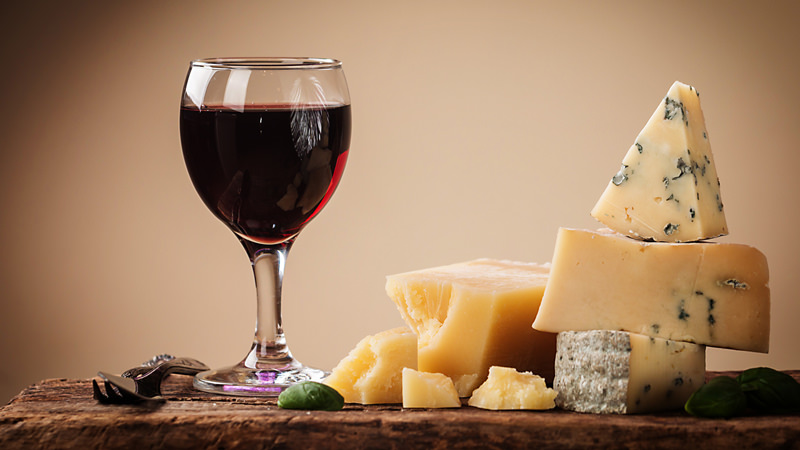
Wine geeks firmly believe that there is a wine that matches up with absolutely everything, with the possible exception of Cheerios. Other than that, they would have you drinking wine with foods that are absolutely all wrong together. In fact, many pairings have become clichés while others make no sense at all. Here are examples worth ignoring.
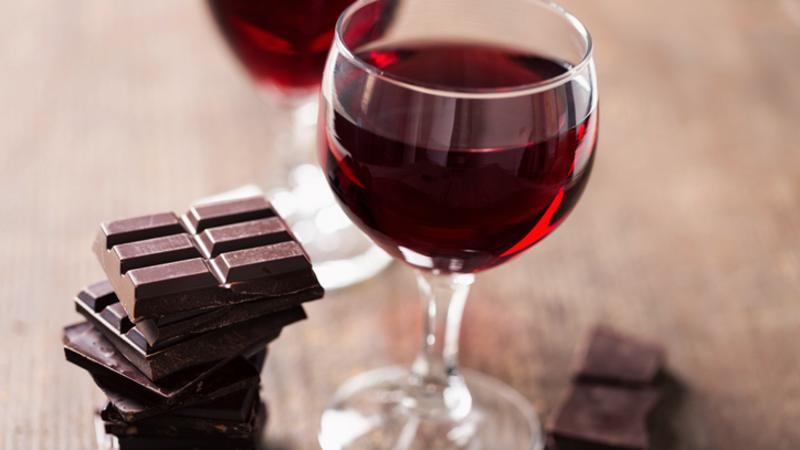 Red wine and chocolate—Dry red wines like Cabernets,
Zinfandels, Burgundies and Bordeaux
are by their very nature full of tannins, which
wonderfully complement savory
food. They do nothing, however, for sweet foods,
which completely blunt those
tannins’ appeal and vice versa. Chocolate desserts
and candies are to be
enjoyed on their own, and, after a savory meal
with red wine, who really wants
to drink more with dessert?
Red wine and chocolate—Dry red wines like Cabernets,
Zinfandels, Burgundies and Bordeaux
are by their very nature full of tannins, which
wonderfully complement savory
food. They do nothing, however, for sweet foods,
which completely blunt those
tannins’ appeal and vice versa. Chocolate desserts
and candies are to be
enjoyed on their own, and, after a savory meal
with red wine, who really wants
to drink more with dessert?
Dessert wines go well
with
desserts—A broad range of sweet
wines, from Port to Sauternes, usually fall under
the category of “dessert
wines,” suggesting they go well with desserts. But
not only are most desserts,
from lemon meringue pie to Ben & Jerry’s
Cherry Garcia ice cream, sweeter
than most sweet wines that lose in the match, but
the better sweet wines of the
world should be enjoyed as an end-of-the-meal
dessert all on their own. A great
Tröckenbeerenauslese from the Rhine, a golden
Sauternes from Bordeaux, a late
harvest Riesling from California or a vintage Port
from the Douro Valley are
wines made to be savored in sips with nothing else
to detract from 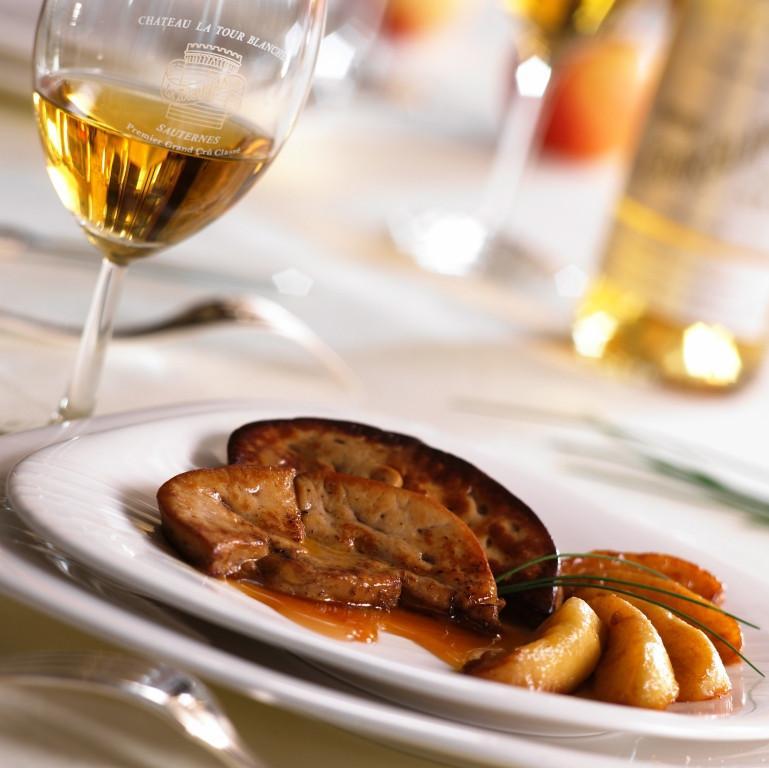 their
unique
excellence.
their
unique
excellence.
Sauternes and Foie gras—While we’re speaking of Sauternes,
the “classic” match -up of
Sauternes with foie gras is explained by saying
that the ultra-rich fattiness
of the liver is complemented by ultra-rich
sweetness of the botrytis-infected
Semillon grape. Why that makes sense is beyond me,
except as a shock of
opposites, and, as noted above, a wine like
Sauternes should be enjoyed on its
own as a dessert. The late and very eccentric
Philippe Baron de Rothschild of
Château Mouton-Rothschild once told me the only
Sauternes he believed worked with foie gras was
Château d’Yquem, which he stuck
in the freezer until it was almost slushy. Other
Sauternes, he said, as good as
they might be, don’t work with foie gras. Me, I’ll
save the Yquem to enjoy on
its own, while listening to Saint-Saëns or Billy
Holiday.
Wine with artichokes and asparagus—Pairing a wine with artichokes and asparagus is like a flamenco guitarist putting steel strings on his guitar. It just won’t work. The reason is that both vegetables contain sulfur-smelling carboxylic acid that makes wine taste awful (and your urine horrible). All wines. Every wine. But wine geeks keep trying to match up bottles with the vegetable, with the result being that the best match isn’t as bad as some others, but it’s still bad.
Red wine
with cheese—The milder and
fresher the cheese, like ricotta or feta, the more
likely red wine may work,
but definitely not with stronger cheeses,
especially blues, which make red
wines taste metallic. But what about the classic
match of Stilton with Port?
That’s a veddy British thing, and it’s pretty good
but doesn’t do anything for
the Port. Much better are white wines with cheese,
especially big creams like
Camembert and Brie.
Champagne throughout the meal—Of course you’d say this, if you are a producer of Champagne, or any sparkling wine, or if you are a Champagne idolator who would drink your favorite bubbly with Twizzlers. But as much as I love Champagne, as an aperitif, with hors d’oeuvres, with seafood and chicken, it is ridiculous to cogitate over which Champagne would go well with a char-broiled steak, lamb stew or lasagna alla bolognese. There are so many wines that go so much better with different courses in a meal, and Champagne’s prime virtue is its delicacy, which is not going to count for much under the assault of chile peppers, ketchup or, of course, asparagus.
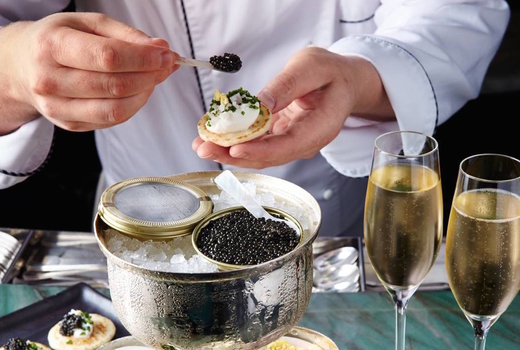
Caviar demands vintage
Champagne—The old adage that you
drink white wines with fish and red wines with
meat is a bit dated, but it’s certainly
true that red wines are horrid with fishy seafood.
Which caviar often is,
although the best has the aroma and taste of the
briny deep without being
overly fishy. But the conceit that the exquisite
refinement of Russian or
Iranian caviar deserves an expensive vintage
Champagne as an honorable marriage
is piffle. Do drink Champagne if you wish, but the
true aficionado of caviar
knows that vodka, with its neutral taste and
aroma, is the ideal match because
it does not interfere with the caviar’s delicacy.
(The care taken to maintain
that purity of flavor is why caviar is
traditionally eaten with a mother of
pearl spoon; silver has a metallic taste.) Alas,
now that true Russian and
Iranian caviar from the Caspian Sea is outlawed
for sale, the stuff coming in
from China at alarming prices isn’t worth popping
a cork of vintage Champagne
over. 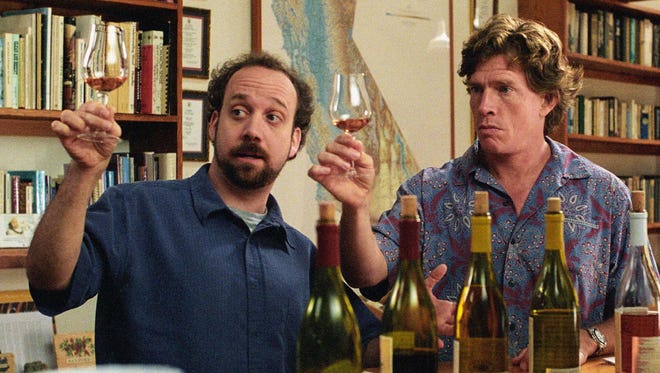
Merlot will never be
among
the better wines of the world—No wine
has ever been dealt a lower blow than Merlot in
the comedy movie Sideways
(right),
when a character who fancies
himself a connoisseur screams, “No, if anyone
orders Merlot, I’m leaving. I am
not drinking f****** Merlot!”
While obviously an absurd vow, that quote
sent the California Merlot
market into a tailspin for years, and you still
meet plenty of ignoramuses who
dismiss the idea that Merlot can ever rise to the
quality level of Cabernet
Sauvignon or Pinot Noir. Well, that’s not the case
in Bordeaux, where one of
the most prized and expensive wines in the world
is produced: Château Pétrus,
made from 100% Merlot. I’d also recommend any
anti-Merlot drinker to try the
great Merlots of Napa Valley’s Duckhorn winery,
which long before Sideways had
proven just how excellent
the varietal can be.
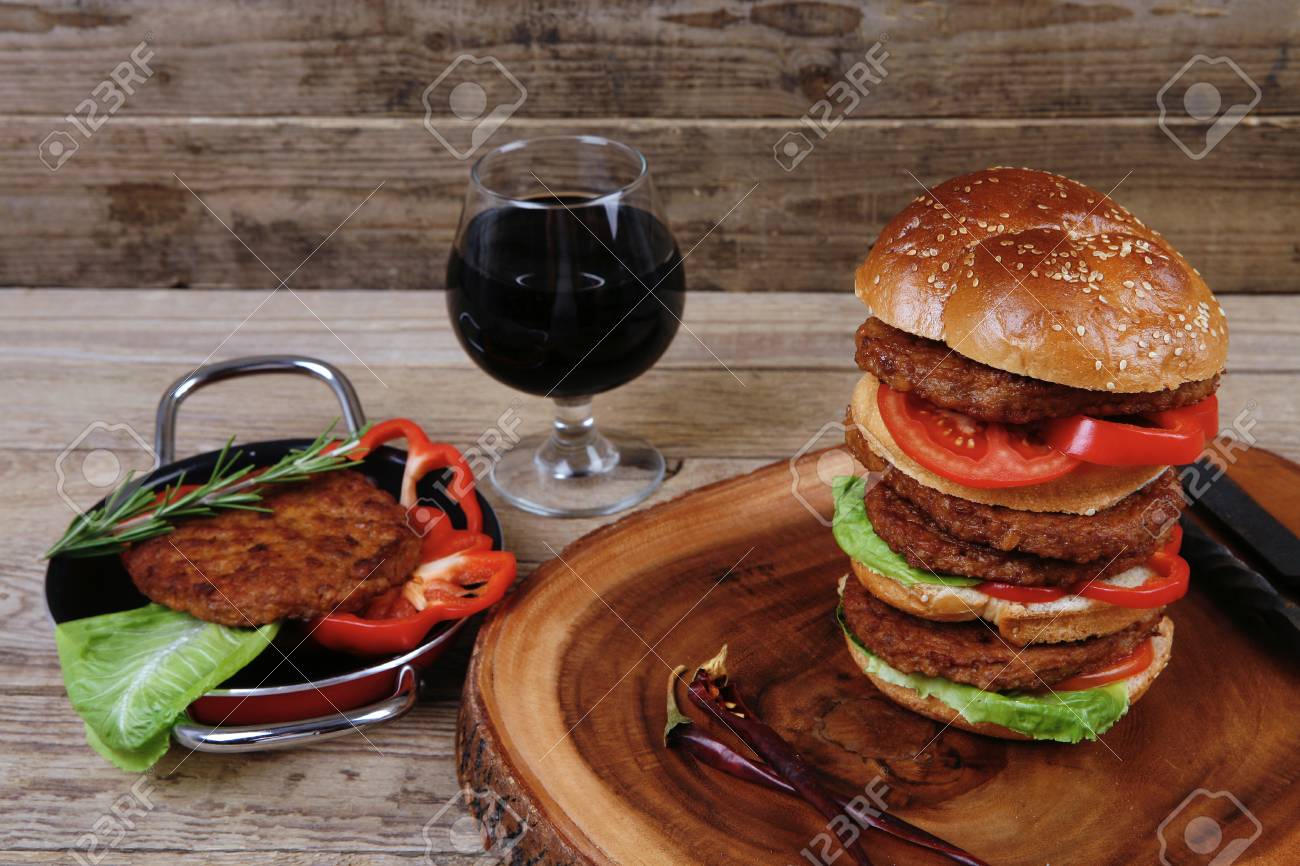 A good
hamburger deserves a
great wine—I’m not even sure a good
hamburger deserves a wine at all, although I drink
the two together quite
often. The rationale is that a burger is made of
beef, just like a porterhouse,
so if you serve a $125 Cab with the latter, why
not with the former? Two
reasons: Too often the American hamburger gets
gussied up with way too many
ingredients that will render an expensive wine
less than it might be with
simpler meat dishes. Second, there are so many
wonderful, inexpensive red wines
from so many countries—Spanish Riojas, Italian
Barberas, French Beaujolais, for
example—that go nicely with onions, ketchup,
cheese slices, mushrooms, lettuce,
chili sauce, barbecue sauce and all the stuff that
goes atop the modern burger.
Or you could just have a cold beer.
A good
hamburger deserves a
great wine—I’m not even sure a good
hamburger deserves a wine at all, although I drink
the two together quite
often. The rationale is that a burger is made of
beef, just like a porterhouse,
so if you serve a $125 Cab with the latter, why
not with the former? Two
reasons: Too often the American hamburger gets
gussied up with way too many
ingredients that will render an expensive wine
less than it might be with
simpler meat dishes. Second, there are so many
wonderful, inexpensive red wines
from so many countries—Spanish Riojas, Italian
Barberas, French Beaujolais, for
example—that go nicely with onions, ketchup,
cheese slices, mushrooms, lettuce,
chili sauce, barbecue sauce and all the stuff that
goes atop the modern burger.
Or you could just have a cold beer.
A nice white wine with salad—In a word: Vinegar. Even vinegar made from red wine. The reason you add vinegar to a salad is for its intense acid (lemon juice does the same), which brightens all the flavors of greenery but makes wine taste flat and out of place. If any wine works, it might be a rose with big floral aromatics that add another note to the spring-summer tastiness of a salad.
Sponsored by

Any of John Mariani's books below may be ordered from amazon.com.
 The Hound in Heaven
(21st Century Lion Books) is a novella, and
for anyone who loves dogs, Christmas, romance,
inspiration, even the supernatural, I hope you'll find
this to be a treasured favorite. The story
concerns how, after a New England teacher, his wife and
their two daughters adopt a stray puppy found in their
barn in northern Maine, their lives seem full of promise.
But when tragedy strikes, their wonderful dog Lazarus and
the spirit of Christmas are the only things that may bring
his master back from the edge of despair.
The Hound in Heaven
(21st Century Lion Books) is a novella, and
for anyone who loves dogs, Christmas, romance,
inspiration, even the supernatural, I hope you'll find
this to be a treasured favorite. The story
concerns how, after a New England teacher, his wife and
their two daughters adopt a stray puppy found in their
barn in northern Maine, their lives seem full of promise.
But when tragedy strikes, their wonderful dog Lazarus and
the spirit of Christmas are the only things that may bring
his master back from the edge of despair. WATCH THE VIDEO!
“What a huge surprise turn this story took! I was completely stunned! I truly enjoyed this book and its message.” – Actress Ali MacGraw
“He had me at Page One. The amount of heart, human insight, soul searching, and deft literary strength that John Mariani pours into this airtight novella is vertigo-inducing. Perhaps ‘wow’ would be the best comment.” – James Dalessandro, author of Bohemian Heart and 1906.
“John Mariani’s Hound in Heaven starts with a well-painted portrayal of an American family, along with the requisite dog. A surprise event flips the action of the novel and captures us for a voyage leading to a hopeful and heart-warming message. A page turning, one sitting read, it’s the perfect antidote for the winter and promotion of holiday celebration.” – Ann Pearlman, author of The Christmas Cookie Club and A Gift for my Sister.
“John Mariani’s concise, achingly beautiful novella pulls a literary rabbit out of a hat – a mash-up of the cosmic and the intimate, the tragic and the heart-warming – a Christmas tale for all ages, and all faiths. Read it to your children, read it to yourself… but read it. Early and often. Highly recommended.” – Jay Bonansinga, New York Times bestselling author of Pinkerton’s War, The Sinking of The Eastland, and The Walking Dead: The Road To Woodbury.
“Amazing things happen when you open your heart to an animal. The Hound in Heaven delivers a powerful story of healing that is forged in the spiritual relationship between a man and his best friend. The book brings a message of hope that can enrich our images of family, love, and loss.” – Dr. Barbara Royal, author of The Royal Treatment.
 |
The Encyclopedia of American Food and Drink by John F. Mariani (Bloomsbury USA, $35) Modesty forbids me to praise my own new book, but let me proudly say that it is an extensive revision of the 4th edition that appeared more than a decade ago, before locavores, molecular cuisine, modernist cuisine, the Food Network and so much more, now included. Word origins have been completely updated, as have per capita consumption and production stats. Most important, for the first time since publication in the 1980s, the book includes more than 100 biographies of Americans who have changed the way we cook, eat and drink -- from Fannie Farmer and Julia Child to Robert Mondavi and Thomas Keller. "This book is amazing! It has entries for everything from `abalone' to `zwieback,' plus more than 500 recipes for classic American dishes and drinks."--Devra First, The Boston Globe. "Much needed in any kitchen library."--Bon Appetit. |
"Eating Italian will never be the same after reading John Mariani's entertaining and savory gastronomical history of the cuisine of Italy and how it won over appetites worldwide. . . . This book is such a tasteful narrative that it will literally make you hungry for Italian food and arouse your appetite for gastronomical history."--Don Oldenburg, USA Today. "Italian
restaurants--some good, some glitzy--far
outnumber their French rivals. Many of
these establishments are zestfully described
in How Italian Food Conquered the World, an
entertaining and fact-filled chronicle by
food-and-wine correspondent John F.
Mariani."--Aram Bakshian Jr., Wall Street
Journal.
"Equal parts
history, sociology, gastronomy, and just
plain fun, How Italian Food Conquered the
World tells the captivating and delicious
story of the (let's face it) everybody's
favorite cuisine with clarity, verve and
more than one surprise."--Colman Andrews,
editorial director of The Daily
Meal.com. "A fantastic and fascinating
read, covering everything from the influence
of Venice's spice trade to the impact of
Italian immigrants in America and the
evolution of alta cucina. This book will
serve as a terrific resource to anyone
interested in the real story of Italian
food."--Mary Ann Esposito, host of PBS-TV's
Ciao
Italia. "John Mariani has written the
definitive history of how Italians won their
way into our hearts, minds, and
stomachs. It's a story of pleasure over
pomp and taste over technique."--Danny Meyer,
owner of NYC restaurants Union Square
Cafe, The Modern, and Maialino.
|
 |
 |
 |
 |
 |
 |
 |
 |
 Everett Potter's Travel Report:
Everett Potter's Travel Report: 
 Eating Las Vegas
JOHN CURTAS has been covering the Las Vegas
food and restaurant scene since 1995. He is
the co-author of EATING LAS VEGAS – The 50
Essential Restaurants (as well as
the author of the Eating Las Vegas web site: www.eatinglasvegas.
He can also be seen every Friday morning as
the “resident foodie” for Wake Up With the
Wagners on KSNV TV (NBC) Channel 3 in
Las Vegas.
Eating Las Vegas
JOHN CURTAS has been covering the Las Vegas
food and restaurant scene since 1995. He is
the co-author of EATING LAS VEGAS – The 50
Essential Restaurants (as well as
the author of the Eating Las Vegas web site: www.eatinglasvegas.
He can also be seen every Friday morning as
the “resident foodie” for Wake Up With the
Wagners on KSNV TV (NBC) Channel 3 in
Las Vegas.
MARIANI'S VIRTUAL GOURMET
NEWSLETTER is published weekly. Publisher: John Mariani. Editor: Walter Bagley. Contributing Writers: Christopher Mariani,
Robert Mariani, Misha Mariani, John A. Curtas, Gerry Dawes, Geoff Kalish,
and Brian Freedman. Contributing
Photographer: Galina Dargery. Technical
Advisor: Gerry
McLoughlin.
If you wish to subscribe to this
newsletter, please click here: http://www.johnmariani.com/subscribe/index.html
© copyright John Mariani 2020

